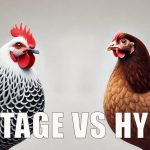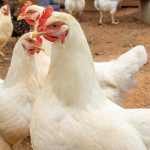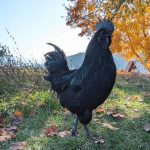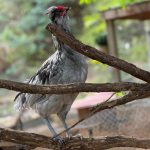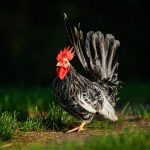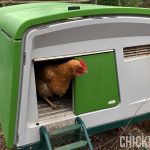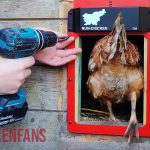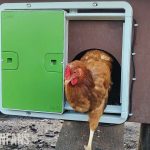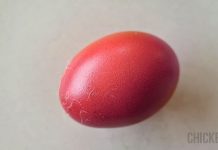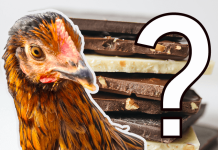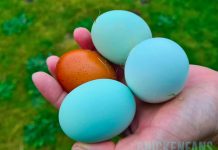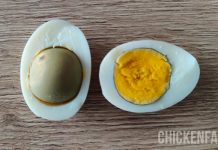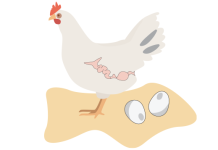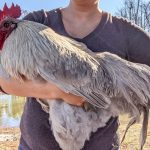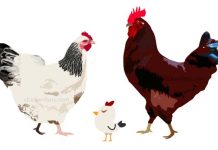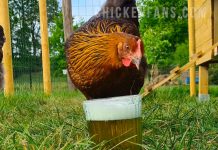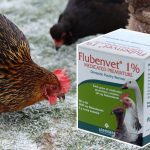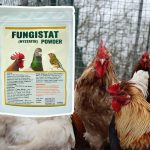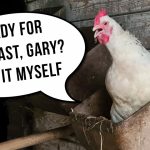Orpington: A Friendly Giant Breed Profile
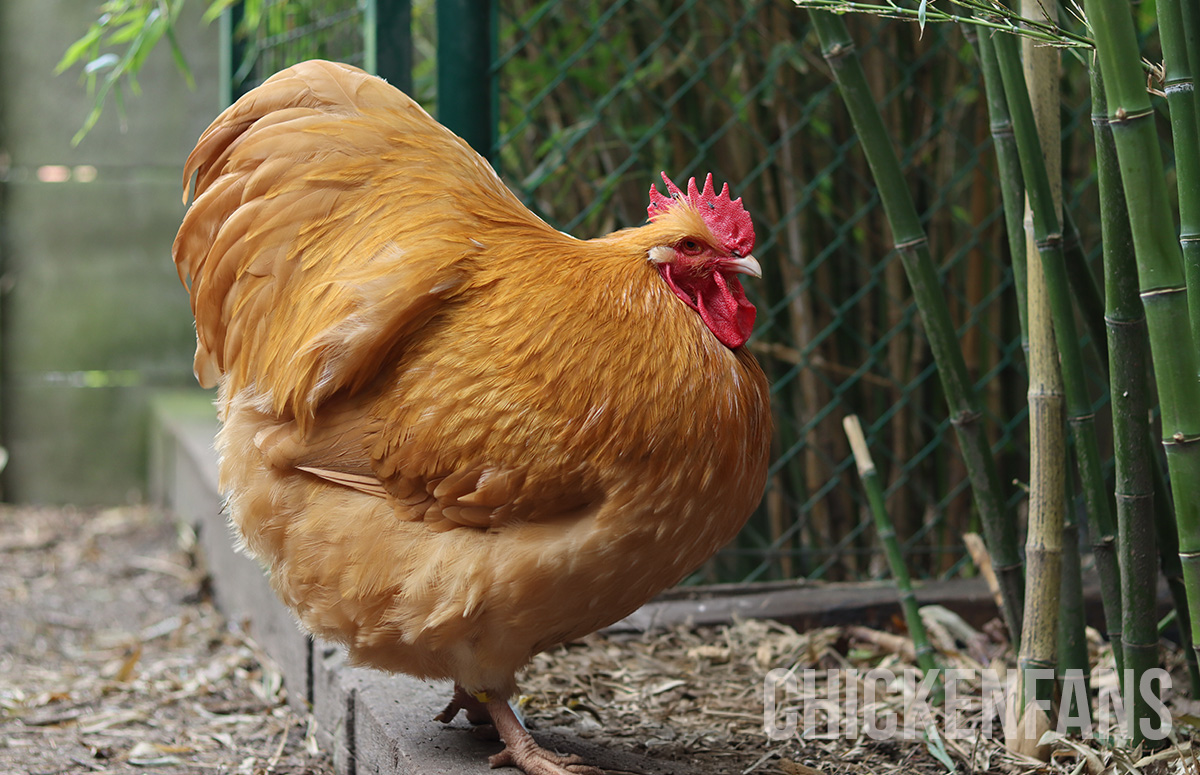
Orpingtons are a large, heavy, dual-purpose chicken breed with a kind temperament. They come in different color varieties, with ‘buff’ being the most popular. Their easy-going character makes them the ideal breed for beginners or chicken keepers with children.
Let’s start with a couple of key takeaways!
- Orpington hens lay 250 light brown eggs per year
- Easy to take care for, docile and friendly
- Large and heavy dual-purpose breed
- Easily go broody
If you don’t feel like reading the article, don’t worry—we’ve got you covered with a short, but in-depth, video.
Characteristics
| Eggs | 240-270 eggs/year |
| Egg Color | Light brown |
| Egg Size | (Extra) Large |
| Weight | 8-10 lbs |
| Hardiness | Very cold-hardy |
| Temperament | Extremely docile, easy to care for |
| Beginner-friendly | Yes |
| Color | Varies, Buff being the most popular |
Orpingtons are very easily recognizable. The heavy and oversized body is typical for this breed, as is their fluffy look. They are a dual-purpose breed and are being kept for meat and eggs.
They range in various colors: black, white, blue, and buff. Lavender Orpingtons are beginning to get more and more popular, but the color is not officially recognized.
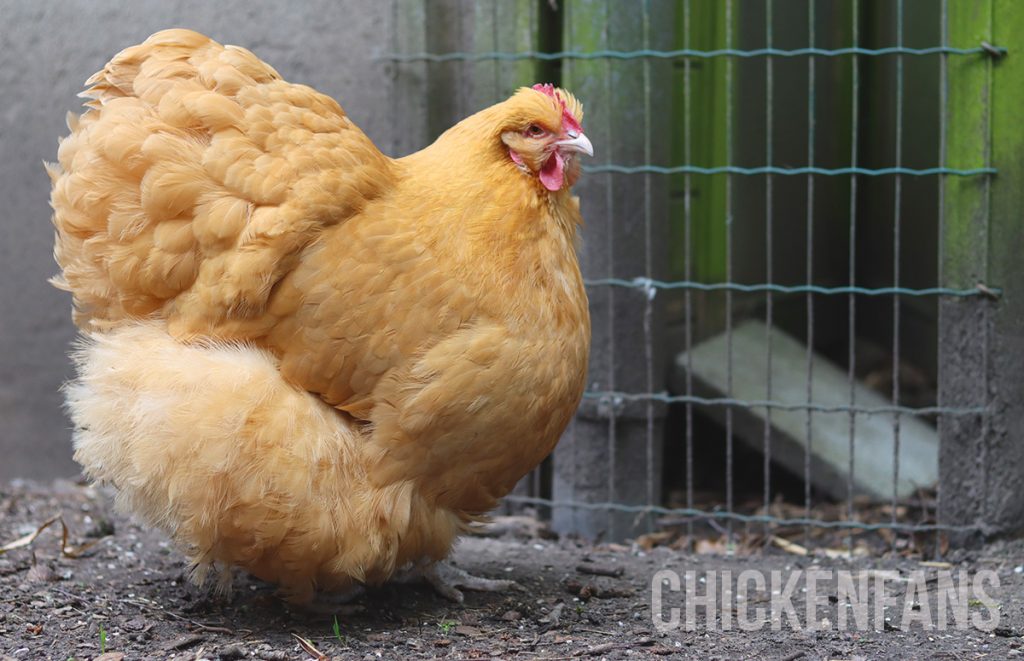
At this moment, Buff Orpingtons are still the most popular color in this fluffy breed. Buff Orpingtons have a rich golden light brown or golden yellow color, but their feathers can fade when exposed to the sun. After molting, their plumage comes back in a deeper, richer color than the ‘old’ feathers.
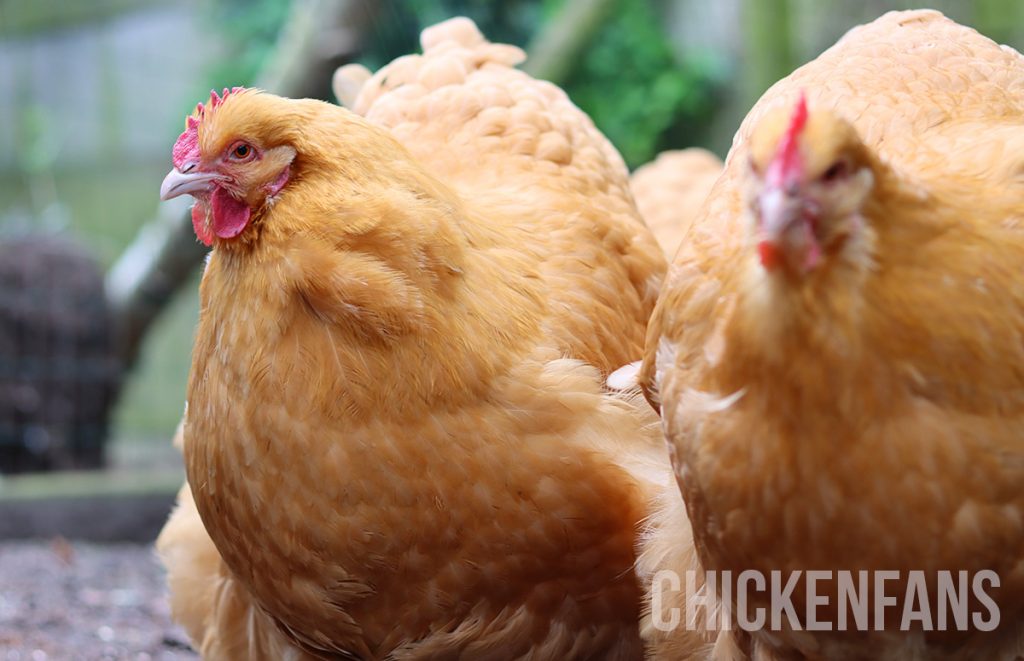
An adult Orpington hen weighs around 7 pounds (3,2 kg), and an Orpington rooster has a body weight of approximately 9 pounds (4 kg). Orpingtons also exist in a Bantam version. This miniature Orpington weighs around 3 pounds (1,4 kg) for a hen and 4,5 pounds (2 kg) for a rooster.
Because of their weight and body structure, Orpingtons can not fly or jump very high. This makes them highly docile and more susceptible to predators, as they aren’t very good at escaping their attackers.
The Orpington’s large body does have one significant advantage. It makes them highly tolerant of cold weather. However, the comb, especially in males, can be susceptible to frostbite. So providing plenty of shelter during the winter months remains necessary.
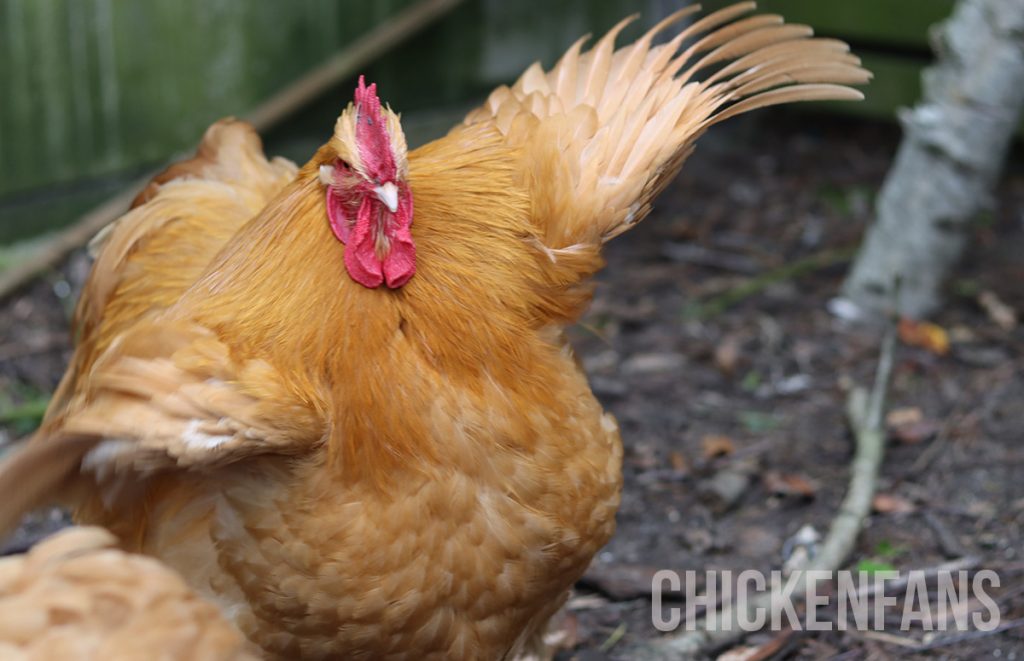
Like most chicken breeds, Orpingtons take temperature changes reasonably well, but they stand cold temperatures better than hot ones. During a heatwave, always cool your chickens by providing plenty of cool water, shady spots, and proper coop ventilation.
The legs of Orpingtons have a pinkish-white color, and no feathers are present on the legs. Their skin color is white. The single comb is bright red and has five points. A variety with a rose comb also exists but is less common. The earlobes and wattles are bright red and medium-sized.
Personality
Orpingtons are known to be gentle giants. They are huge but have kind and pleasant personalities. This makes them excellent company for hobbyists or chicken keepers with small children.
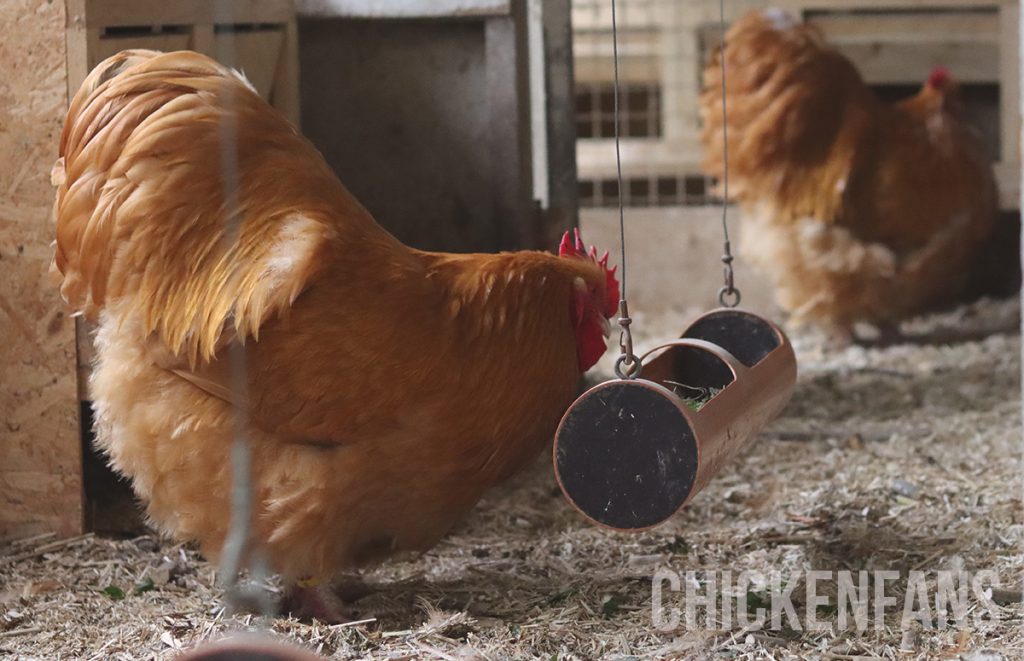
Even Orpington roosters are supposed to have a sweet but still protective nature, although there are exceptions, according to some online chicken owners’ stories.
Orpingtons respond well to any kind of attention. They’ll like your company and can be handled quite easily. Because of their docile and passive nature, they don’t mix well with more dominant breeds like the Rhode Island Red or the Wyandotte.
When looking for a quiet chicken breed, Orpingtons are the number one choice. This breed is exceptionally calm and peaceful and won’t make much noise. This makes them suitable as backyard chickens in a suburban environment as they won’t bother your neighbors.
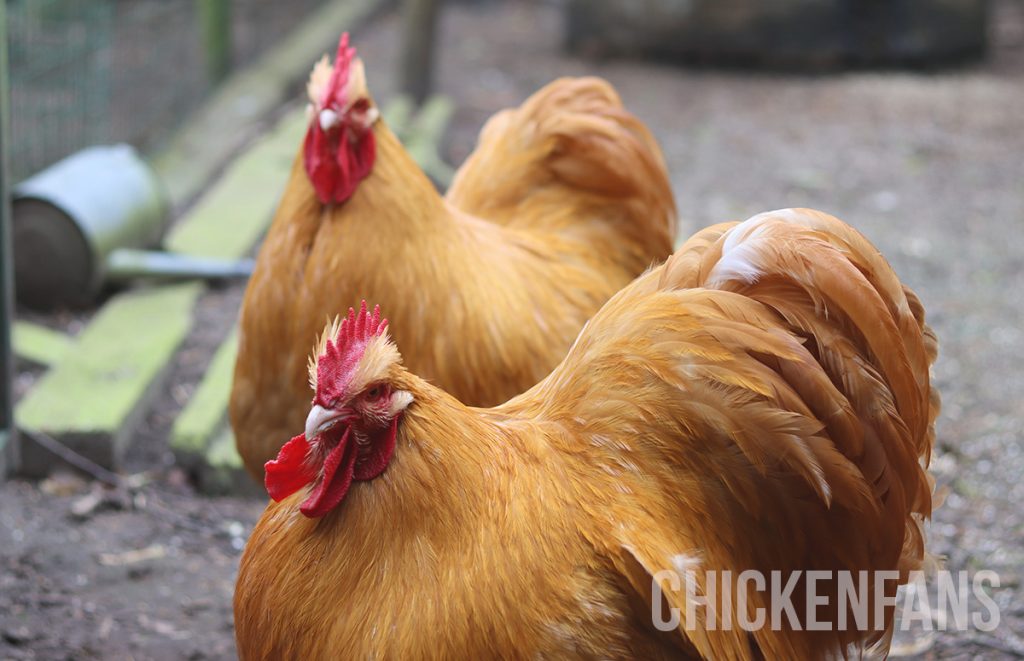
As said before, Orpingtons are big chickens, so they love having as much space as possible. Therefore, they like free-ranging, although they are very docile and won’t wander off too far from home.
You can find the minimum space requirements for chickens in our ‘Chicken Coop Size Calculator’, but for Orpingtons, you’ll need to provide more space than just the bare minimum.
Egg Production
An Orpington pullet reaches adulthood at the age of 20 weeks and will start laying around that time. They are excellent egg layers and lay approximately five large light brown eggs per week. That’s more than 250 eggs per year!
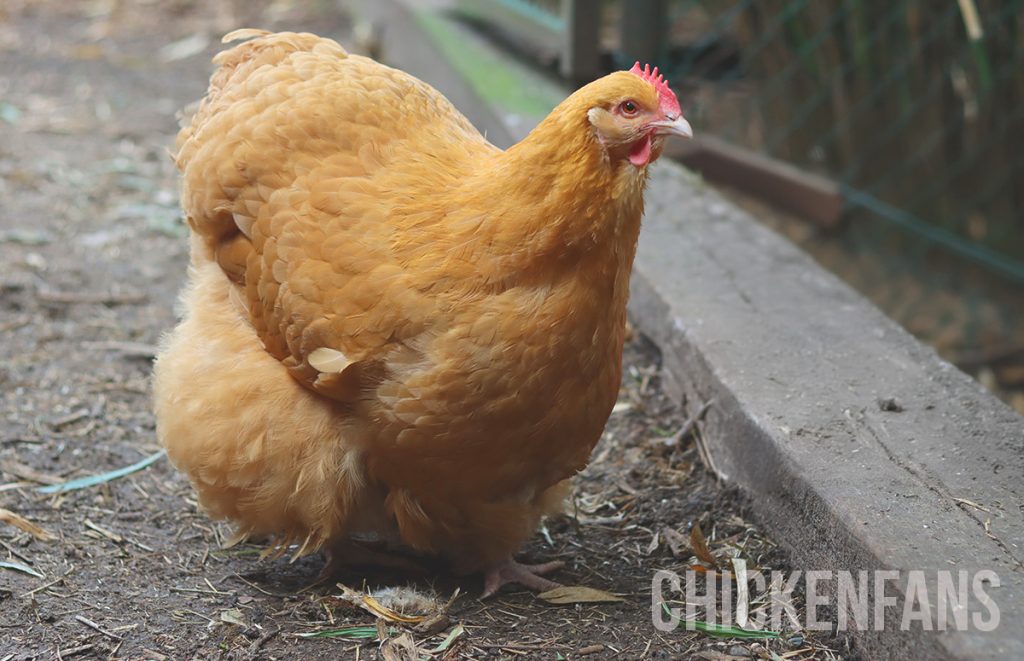
Because they are cold-hardy, most Orpington hens will keep laying during the winter, although their egg production can temporarily decrease. You’ll enjoy their eggs all year round, except during molting.
The hens of the Orpington breed quickly go broody, making them excellent mothers. But if you’re not planning to hatch chicks, broodiness is something you need to keep in mind, as it will stop egg production and fatigue or weaken the bird.
Show Quality vs Commercial Hatchery Orpingtons
There’s something pretty interesting about the difference between show-quality Orpingtons and those you can buy at a commercial hatchery. The Orpingtons you see strutting around at poultry shows are generally heavier and bigger than the ones you get from hatcheries.
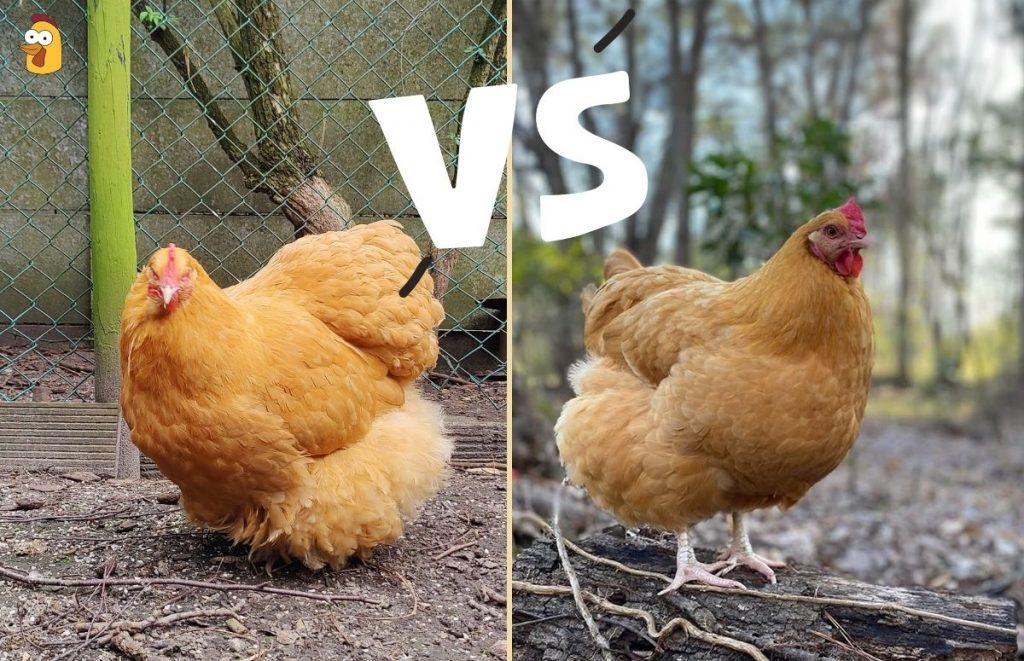
Now, why’s that? Well, it all comes down to breeding.
When you’ve got those big, heavy Orpington roosters trying to mate with almost equally large hens, only about 15 to 20% of the eggs actually get fertilized—it’s kind of tough for them to do their thing.
So, commercial breeders go for slightly smaller, lighter Orpingtons to make the process easier and boost fertility rates. And that is why you will notice a difference in size.
History
The Orpington breed originated from Britain and was bred in the late nineteenth century in Orpington, South-East England. During this time in history, there was an enormous interest in inland chickens and foreign and exotic birds.
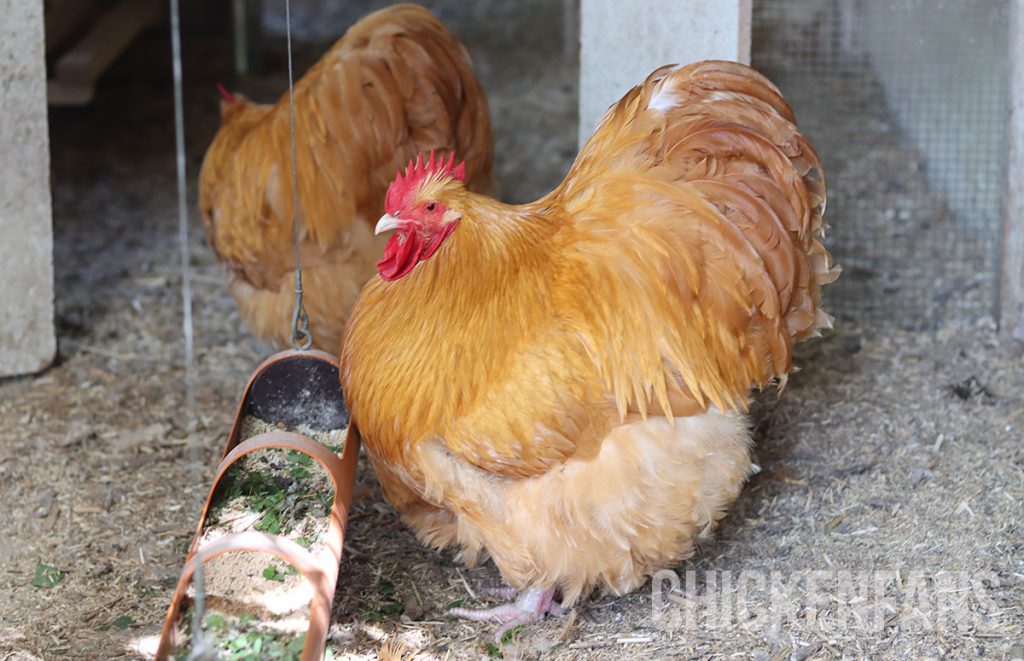
During Hen Fever, people were obsessed with large exotic birds coming from the Far East, like Brahmas. However, the interest in exotic species and looks was only temporary and got replaced by breeding useful chickens to provide meat and eggs. Hello Orpington!
By crossbreeding the Plymouth Rock, Minorca, and Langshan, a new hybrid bird known as the Black Orpington was born.
Because it was a very hardy dual-purpose breed, it became instantly very popular. The American Poultry Association recognized the Buff Orpington in 1902, later followed by the Black, White, and Blue variety. Since then, the Buff Orpington has always been the most popular variety.
Until 2016 the Orpington was to be found on The Livestock Conservancy’s priority list. Luckily, they are no longer considered endangered now.
Summary
Orpington chickens are large, heavy chickens with a very kind and friendly nature. They’re cold-hardy and beginner friendly. They are a quiet breed and can be kept in a suburban neighborhood. Although, because of their size, Orpingtons need more space than normal-sized chickens.
Orpingtons are a dual-purpose breed and can be kept for both meat and eggs. They are excellent egg layers and lay around five large light brown eggs per week. Orpington hens easily go broody, so they are a good choice when you’re interested in hatching fertilized eggs.
If you want to learn more about chicken breeds, check out our ‘Chicken Breeds Page‘ to see every specific breed we address. Or go to our listicle breed summary on ‘The Classroom‘, or, if you’re unsure where to start, browse our ‘Chicken Breeds: Ultimate Beginners Guide‘.
If you’re interested in reading more on brown-colored chickens, take a look at ‘Top 15 Brown Chicken Breeds: All Beginner-Friendly‘.
All Orpingtons on our photos are property of Paul De Cuyper, breeder of Orpington chickens.
